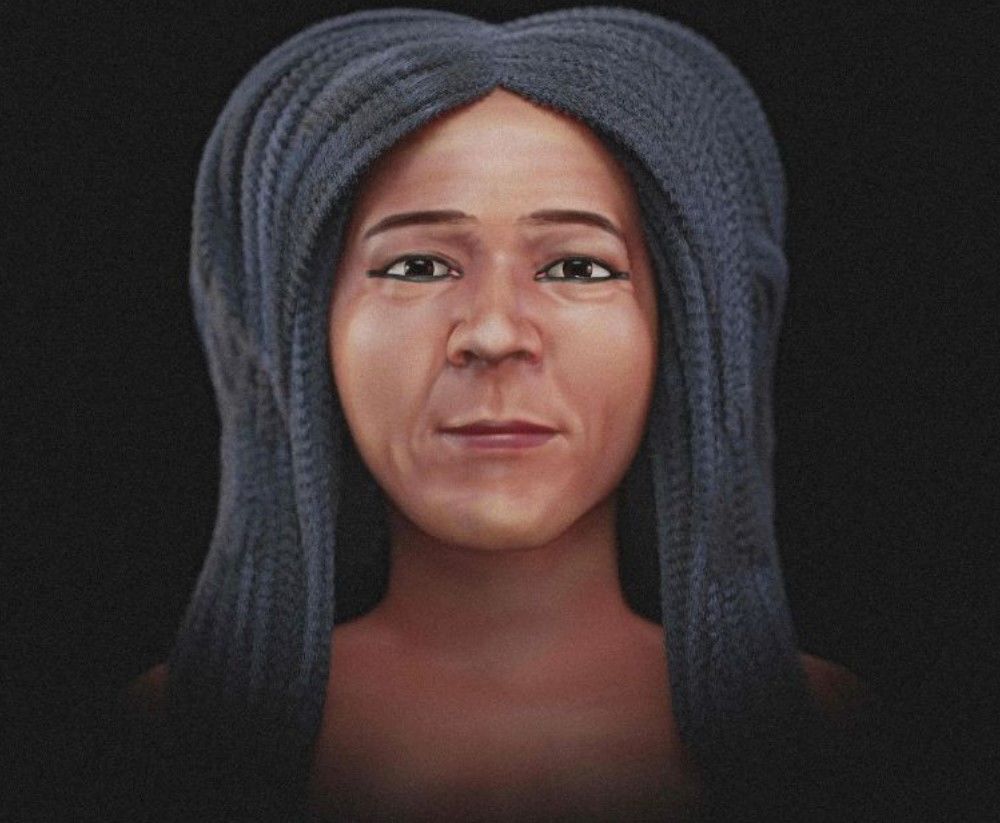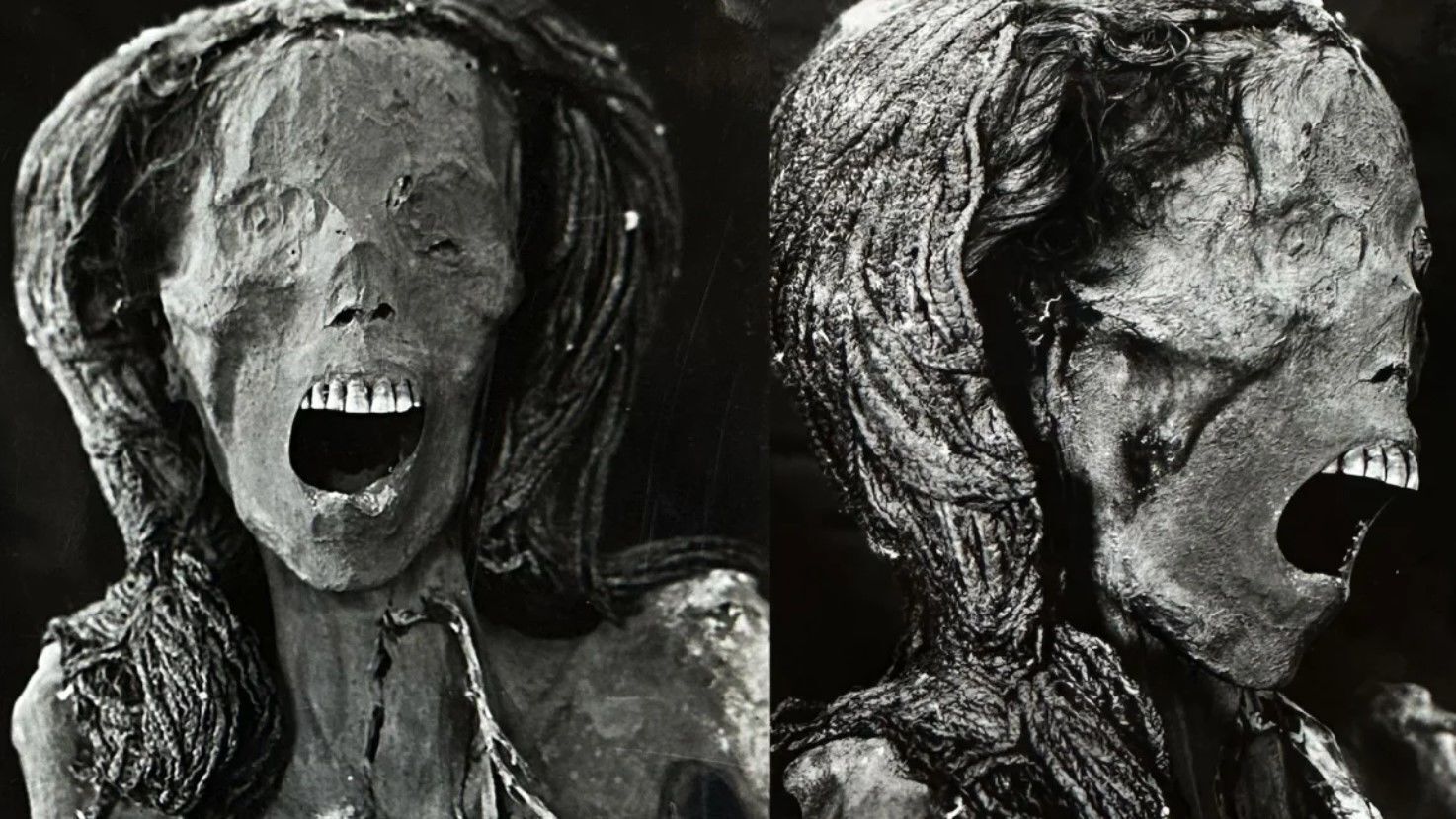Scientists have managed to recreate the face of an Egyptian mummy screaming in agony (photo)

The true face of an ancient Egyptian mummy who died in agony has been recreated for the first time after 3500 years thanks to the efforts of scientists. The mummy, known as the "screaming woman," was found in 1935 in Deir el-Bahar, Egypt, in the family tomb of the royal architect Senmut.
Unlike most mummies, her internal organs were preserved, which is why it was long assumed that her gaping mouth was the result of the negligence of the embalmers. This was reported by the Daily Star.
However, a recent study has shown that the cause of the distorted facial expression lies in a painful death, which prompted scientists to reconstruct her appearance during her lifetime.
Read also: Scientists decipher warnings on Babylonian tablets that are more than 4000 years old
Cicero Moraes, a Brazilian graphics specialist who worked on the reconstruction, said the result was a "pleasant face" created by combining several methods.
He explained: "I used a technique that combines traditional methods of facial reconstruction with modern approaches based on computed tomography data from living people. These projections allow us to determine the spatial boundaries of structures such as ears, eyes, nose, mouth, etc. It is also possible to track some elements in profile, such as the nose and sides of the face. The data is complemented by an anatomical deformation technique, where the virtual head of the donor adapts to the skull to be recreated. All the data is compatible with minor differences, allowing the final face to be created as an interpolation of all the information."
Moraes created several versions of the face. One of them is neutral, with eyes closed and in grayscale to avoid judging skin or eye color. The other version is more subjective and depicts the woman as she might have looked in life, in color and with the wig she was buried in.

The third image shows how the mummy might have looked at the time of burial, showing her screaming.

Moraes is aware that the choice of skin tone in the latest images may cause controversy. He noted: "The question of the skin color of ancient Egyptians is the subject of much controversy, often crossing over from the scientific discourse into the cultural and political. To avoid these problems, I have taken an approach based on publications on the subject, local research data, and ancient Egyptian art."
Sahar Salim of Cairo University, the main author of the recent study of the "Screaming Woman," believes that the cause of the mummy's suffering is cadaveric spasm.
"She was embalmed with expensive imported materials," explains Dr. Salim. "This, together with the mummy's well-preserved appearance, contradicts the traditional view that the inability to remove internal organs indicates poor mummification. The expression on the mummy's face can be interpreted as the result of a cadaveric spasm, indicating that the woman died in agony. This mummified woman is a real "time capsule" that reveals some of the secrets of mummification."

The cause of her painful death remains unknown. Using Fourier transform infrared spectroscopy, Dr. Saleem and her team found that the body was embalmed with juniper and frankincense, both of which were expensive, with the juniper imported from the Eastern Mediterranean and the frankincense from East Africa or South Arabia.
The mummy also wore a wig made of date palm fibers treated with quartz, magnetite, and albite crystals. Salim speculates that this was done to give the strands stiffness and a black color that represented youth to the ancient Egyptians.
She adds: "The excavation records mention that the woman wore two rings with jasper scarabs on gold and silver frames. The materials for these amulets and jewelry indicate her wealth and socioeconomic status."
Read also: Remains of a lost temple unearthed in Israel (video)
Although the coffin does not bear the woman's name, her burial place next to the funerary temple of Pharaoh Hatshepsut gives a clue. She was buried alongside the parents of Senmut, the temple's architect and overseer of royal works, who is said to have been the pharaoh's lover.
"She was probably a close member of Senmut's family, which explains her place of eternal rest next to her parents," Salim said.
Moraes expressed his admiration for the work of Salim and her co-author, Samia El-Merghany of the Egyptian Ministry of Tourism and Antiquities, calling their work "inspiring." "I have greatly enjoyed reading scientific articles and writing them myself. I read Salim and El-Mergani's article detailing the discovery and decided to contribute by sharing this discovery."
Earlier, we told you that in ancient times, the elite had a family ritual that involved the sacrifice of children.
If you want to get the latest news about the war and events in Ukraine, subscribe to our Telegram channel!
